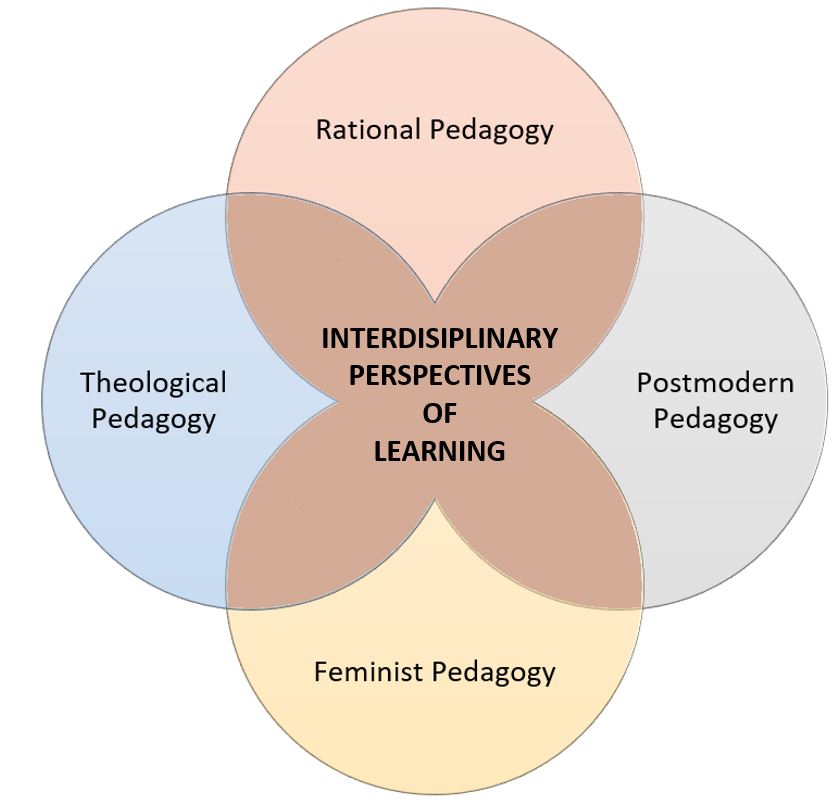5.2 Diverse Perspectives in Education
There are ways to navigate diverse perspectives in education. First, the institutional interactions of a university model can be molded to meet the needs of students with diverse perspectives. This starts by accepting academic freedom that allows all types of speech, scholarship, and perspectives to be brought forward and scrutinized for critique. This should also be continuous. It is important that all sides are met with acceptance in conversations and critiqued from all sides.
An example was when the Ontario government mandated a free speech policy on college and university campuses[2]. This shows a policy initiative from the government level that was reflected in public institutions to allow discourse to take place inside the walls of academia.
Some diverse perspectives are the four views of pedagogical design which make sense of diverse perspectives within education, and how they might relate to one another. Furthermore, institutional initiatives can be enhanced through:
- Rational Pedagogy
- Postmodern Pedagogy
- Feminist Pedagogy
- Theologian Pedagogy
Focusing on learning that is grounded, centred, or pragmatic in nature tends to align with rationalized thinking. Rational pedagogy aims to theorize learning through experiential and logic-based forms of understanding. This is borne out of the concept of aesthetic knowledge when educating through cognitive resonance and technical competence[3]. The logical nature of a rational pedagogy allows learning to closely relate to the naturalistic tendencies or people to obtain knowledge through the senses of thinking and doing. Of course, a critical reflection on rational pedagogy is that it may not account for effective learning, given that naturalistic tendencies are perceived differently among individuals. However, approaching a liberalized, natural tendency towards pedagogy and aesthetic knowledge can produce meaningful, efficient, and practical learning.
A thwart to rational pedagogy would be postmodern pedagogy, which focuses on a rejection of classical and societal pedagogical norms and moves toward a collective way of knowing through the diffusion of power relations[4]. The aim of this approach is a move away from naturalistic tendencies, by allowing learning to be more collaborative, and dismantling power constraints to allow for deeper understanding through social and cultural indicators. The challenge with this form is that learning is more than social and cultural power structures, so and a move away from naturalistic learning tendencies can be harmful to the learning objectives of a student. Ultimately, the postmodern pedagogy is to be used as a critical tool of understanding power within teaching and learning, rather than a guide, or a framework.
In relation to postmodern pedagogy is feminist pedagogy, which focuses on teaching and learning through a lens of equality and collective relationships and addresses power imbalances[5]. Feminist pedagogy is eclectic and provides equalization of power in the tradition of feminism. It allows students and teachers to be on an equal footing to enhance a collective depth of learning. The challenge with this pedagogy, as with postmodernism, is that there is more to learning than the gender-based differences between the teacher and the student. However, it can be a useful way to enrich speech through its equality measures.
Theological pedagogy commonly refers to divine pedagogy, as teaching from a higher being or force that guides the learning of both the teacher and student[6]. Although the definition is often based on Christian teachings, it can apply to any higher force of governance or any type of religion. The aim of this pedagogical concept is to channel learning through the omnipotent force that governs people towards knowledge attainment. The criticism of this is that it moves away from a collective ethos, and constrains it within a divine context that can be cloudy when cultural differences intertwine with the governing force. However, it also creates a connection that promotes an ethical guide for teaching and learning to strengthen social and emotional factors.
Regardless of the perspectives on pedagogy, it is important to know, understand, and ultimately acknowledge its different forms that can be used within the classroom. This means that teaching and learning that can be broad and interdisciplinary, which meet the needs of many different learners. The goal is to be less fractionated and more integrative in the different perspectives to embrace the whole and deep learning objectives.

One key factor to consider is the different learning disabilities within the classroom. No perspective can be effective if learning is not achieved by a student. Dudley-Marling concludes that observing the social contexts and deficit perspectives of students learning disabilities is to address the problem in the classroom and being accountable for it[7]. Ultimately, issues with learning need to be addressed first, in order to continue with perspectives on learning. Otherwise, the risk that learning objectives are not being met will hurt both the educator and the student. To understand this further, use the activities below to critique and examine the interdisciplinary perspectives of learning.

